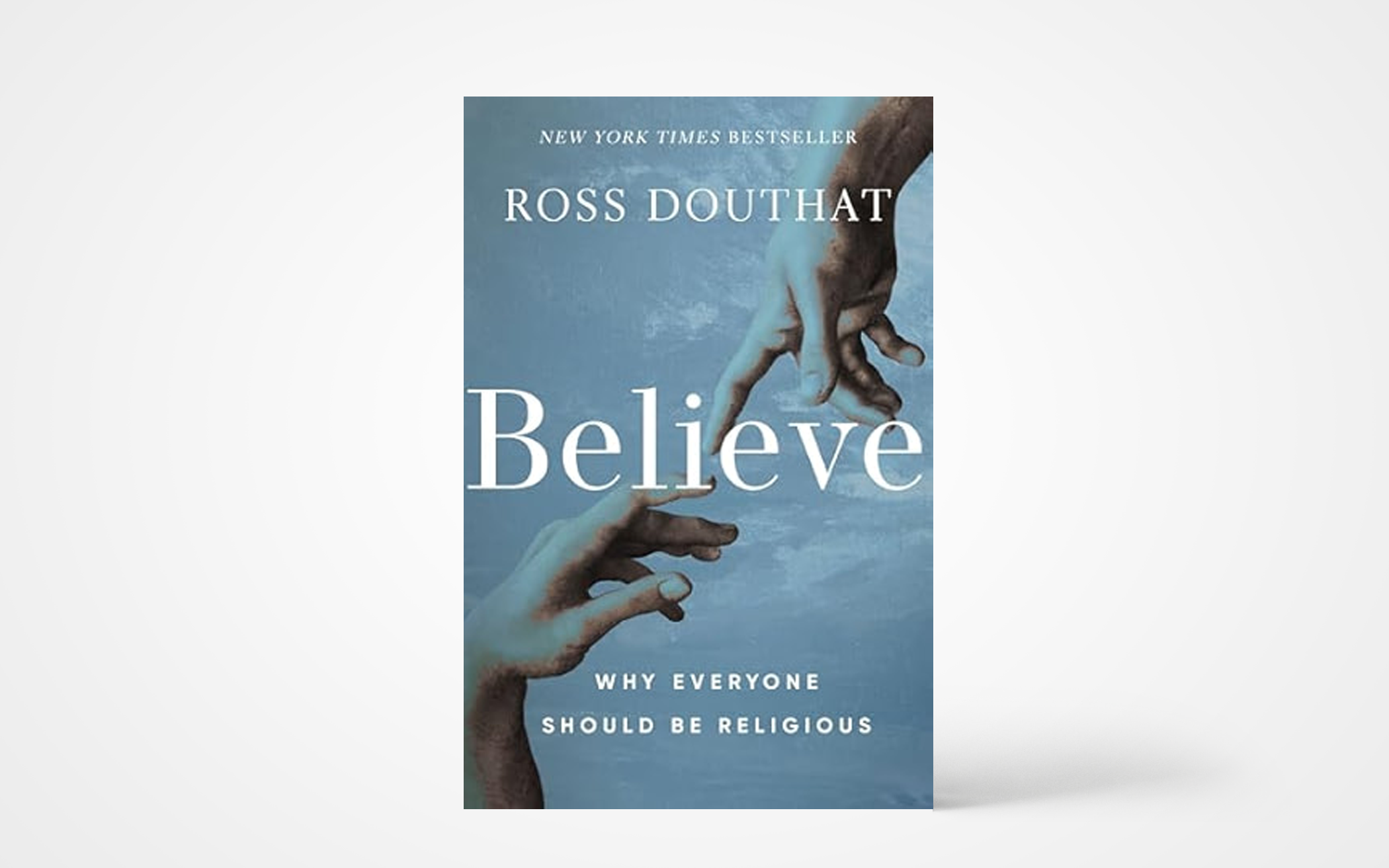In 2012, Ross Douthat’s book Bad Religion, roughly equal parts theology, history, and sociology, argued that our problem isn’t that we’re not religious enough; rather, we’re too religious, but in all the wrong ways. After laying out a brief history of religion in America during the second half of the 20th century, Douthat critiqued modern forms of belief, from the prosperity gospel to the spiritual–but-not-religious attitude that so many people have seemed to embrace. But over 10 years later, he’s taking a very different approach, arguing for the value of virtually any spiritual journey. In doing so, he seems to suggest that our current problem isn’t primarily a lack of orthodoxy; it’s a lack of spiritual curiosity, full stop.
In other words, although Douthat’s new book, Believe: Why Everyone Should Be Religious, is a work of apologetics, and one keenly informed by that field, it (mostly) shies away from promoting a specific religious worldview. Instead, he lays out a case for why a religious outlook still makes sense today, and, in fact, why science supports—yes, supports—faith as a rational choice. He also tackles some of the hard questions that deter many people from embracing a formal religion, whether that be the problem of evil or the issues of sexuality with which so many religions struggle.
Douthat’s approach here is an interesting one. For one, he recognizes that Christianity’s greatest competition today is not from other religious faiths but from the unexamined assumptions of what Charles Taylor refers to as our “Secular Age.” In this section of the book, Douthat makes a compelling case for the ways the universe seems fit to sustain us, and the ways we seem fit to fathom and appreciate it, backed up by the latest science and philosophy. He also spends a good deal of time examining how near-death encounters and other mystical experiences point to a world where plenty of strange things occur that can’t be explained by strict materialism. In less capable hands—and there have been plenty—arguing from design or investigating weird phenomenon might come across as pseudo-scientific wishful thinking, but Douthat is careful in his analysis, being less interested in explaining it all than in recognizing the question it points to: haven’t most of us experienced moments in our lives that point to something more?
Without a doubt, some readers will find the idea of this “something more” far too general for their taste. Those who are avid apologists might be disappointed that rather than beginning with the idea that any other religion is a danger to the Christian faith, Douthat encourages those who buy his primary argument for “something more” to start exploring whatever faith makes sense to them, whether that be Buddhism, Islam, Christianity, or something else.
To these readers who wish Douthat would be more dogmatic, I would make the case that his approach is more rhetorical than it is theological. Given our cultural milieu, it makes sense to begin with the general benefits of faith before insisting upon specifics, which is exactly what he does. Indeed, presenting the final chapter as a “case study” wherein he recounts the story of his own embrace of Catholicism, Douthat smuggles in his best case for Christian belief. Here again, his argument on topics like the reliability of the gospels is well-informed, but, perhaps more importantly, his personal testimony about the beauty of the Christian narrative is genuinely moving.
Ultimately, I don’t know how many skeptics will be converted by this book (or books like it). I pray some are. But Douthat’s last chapter reminds me of another truth: such works are as valuable to those inside the tradition as those outside. In our secular age, each of us needs our faith bolstered from time to time. And each of us could use reminding why the best story is more than just that; it is both beautiful and true as well. (Zondervan)
About the Author
Andrew Zwart lives in Grand Rapids, Mich., and is director of interdisciplinary studies at Kuyper College. He enjoys gardening, impromptu dance parties with his wife and two boys, and taking walks while listening to podcasts.

